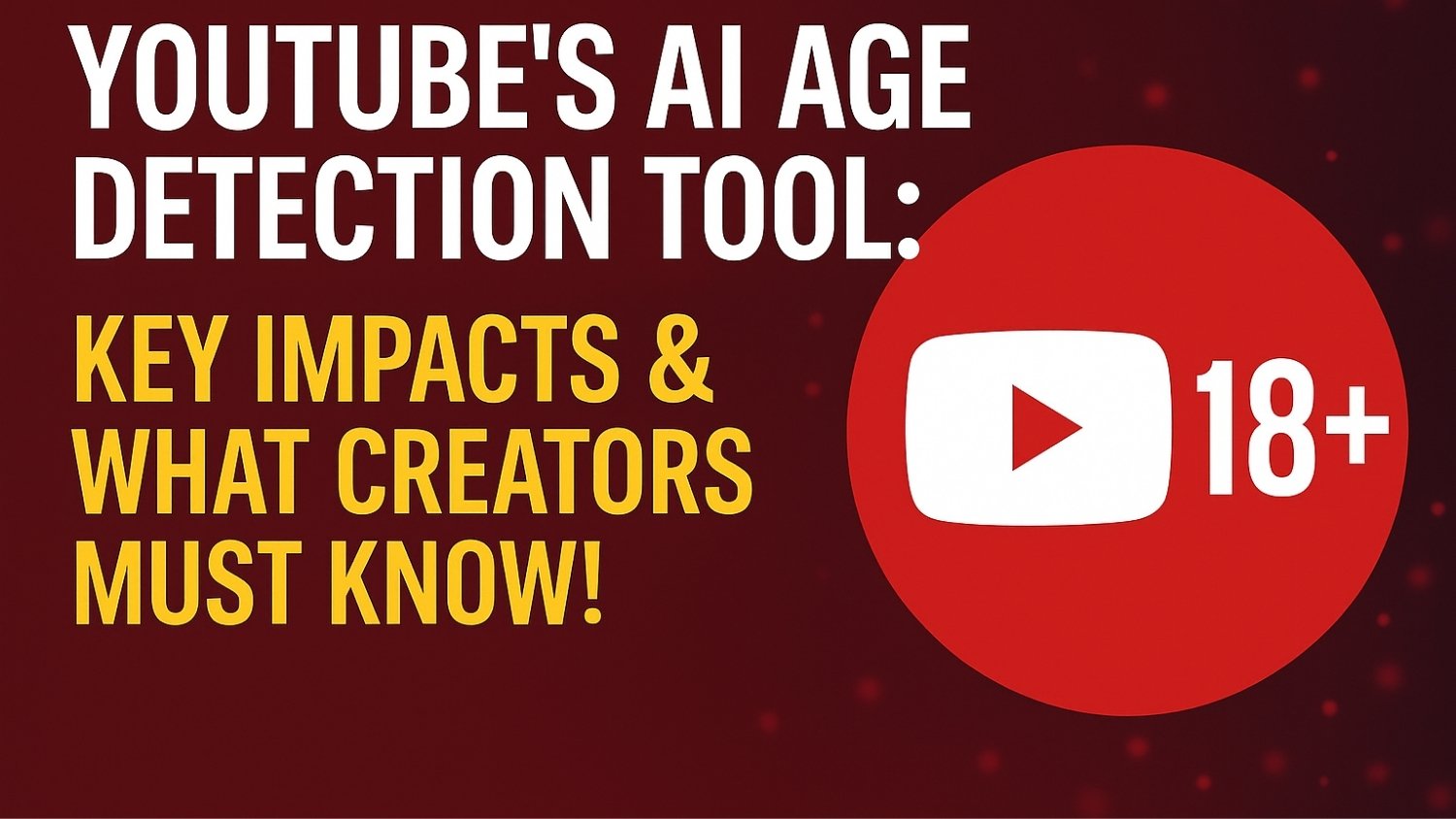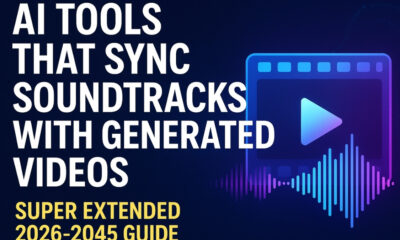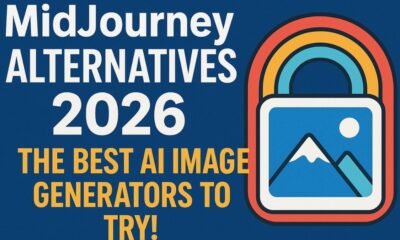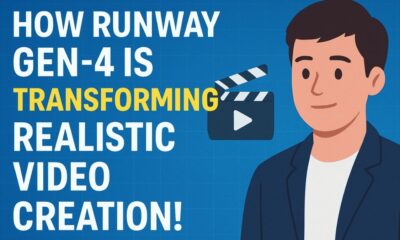AI Technology
Top AI Tools for Educational Video Production in 2026!

Education is undergoing a major transformation, and one of the key drivers behind this change is Artificial Intelligence (AI). As digital learning becomes the backbone of schools, universities, and professional training, the demand for high-quality educational videos has increased significantly. By 2026, AI will not only streamline the process of video creation but also personalize and optimize educational content for learners worldwide.
This article explores how AI-powered tools are shaping educational video production in 2026, why they are essential, and the best ways educators, institutions, and businesses can use them.
Why AI is Crucial for Educational Video Production
- Scalability: Institutions can produce hundreds of video lessons in less time.
- Cost Efficiency: Reduces dependency on expensive production studios.
- Personalized Learning: AI adapts videos to individual student needs.
- Time-Saving: Automates editing, subtitles, translations, and animations.
- Global Accessibility: AI makes content available in multiple languages for diverse learners.
How AI is Revolutionizing Educational Video Production
1. AI-Powered Script Writing & Lesson Planning
Tools like ChatGPT and Jasper AI assist educators in creating structured lesson plans, video scripts, and engaging storyboards within minutes.
2. Automated Video Editing
AI-driven video editors (such as Runway, Pictory, and Descript) allow teachers to convert raw footage into polished educational videos without requiring advanced editing skills.
3. AI-Generated Avatars & Presenters
Platforms like Synthesia and DeepBrain AI enable the creation of realistic AI presenters who can deliver lectures in different languages, making learning more inclusive.
4. Multilingual Support & Subtitles
AI tools provide real-time subtitle generation and translation, allowing educational institutions to reach global audiences.
5. Interactive Learning Videos
AI integrates quizzes, polls, and real-time feedback within video lessons, ensuring students remain engaged and actively participate.
6. Data-Driven Insights
With analytics, AI helps educators track student engagement, completion rates, and knowledge gaps, enabling continuous improvement in teaching methods.
Best AI Tools for Educational Video Production in 2026
| S.No | Tool Name | Key Features | Best For | Why Use It in Education |
|---|---|---|---|---|
| 1 | Synthesia | AI avatars, text-to-video, multilingual support | Schools, Universities, Businesses | Professional videos without cameras or studios |
| 2 | Pictory AI | Script-to-video, auto captions, highlights | Online educators, course creators | Fast production of engaging short and long educational videos |
| 3 | Runway Gen-2 | Advanced AI video editing, background replacement | EdTech platforms, YouTubers | Professional editing features for e-learning content |
| 4 | DeepBrain AI | Talking avatars, multiple language delivery | Corporate training, e-learning | Human-like virtual lecturers for global learners |
| 5 | Descript | Screen recording, podcast + video editing in one app | Teachers, trainers, podcasters | Perfect for creating explainer and tutorial videos with minimal effort |
Benefits of AI in Educational Video Production
- Personalized Education: Adapts videos to match each learner’s pace and style.
- Accessibility: AI ensures education is inclusive for people with disabilities.
- Engagement: Interactive AI-powered features increase student participation.
- Affordability: Reduces the cost of professional video production.
- Speed: Cuts production time from weeks to hours.
The Future of AI in Education by 2026
By 2026, AI will go beyond automating video production and become an active learning assistant. Expect to see:
- Real-time AI tutors embedded in video lessons.
- Adaptive video content that changes based on student performance.
- Immersive AR/VR experiences powered by AI to simulate real-life classrooms.
- Hyper-personalized learning journeys created through AI-driven analytics.
The integration of AI will make video the primary medium for education, bridging the gap between teachers and students worldwide.
Why AI Tools Are Vital for Educational Video Production
- Faster Content Creation: AI reduces the production time from weeks to hours.
- Personalized Learning: Adaptive video lessons match student abilities and pace.
- Cost-Effective: Institutions can cut down video production budgets by up to 70%.
- Global Reach: Multilingual voiceovers and subtitles ensure accessibility worldwide.
- Data-Driven Teaching: AI-powered insights improve course outcomes.
New Trends in AI-Powered Educational Video Production
1. Hyper-Personalized Learning
AI tools now create student-specific video modules. If one student struggles with math formulas, AI will generate a simplified video version tailored for them.
2. Real-Time Adaptive Teaching
In 2026, AI avatars can adjust their explanations mid-video based on learner feedback, creating a dynamic and interactive classroom experience.
3. Immersive AR & VR Integration
With tools like Runway Gen-3, AI integrates virtual reality (VR) and augmented reality (AR) into video lessons, enabling medical students, engineers, and professionals to learn through simulation-based videos.
4. AI-Powered Interactive Assessments
Videos are no longer passive. AI inserts quizzes, polls, and instant feedback loops within video lessons, boosting engagement and knowledge retention.
5. Multilingual Global Classrooms
AI provides real-time translation in over 100 languages, breaking barriers for international learners.
AI Content Creation
YouTube’s AI Age Detection Tool: Key Impacts & What Creators Must Know!

YouTube’s new AI-driven age detection tool is transforming the way content is moderated and delivered on the platform. This system uses machine learning models, computer vision, and natural language processing to evaluate videos for age-appropriate content. It examines speech, visuals, and metadata to ensure compliance with policies and legal standards like COPPA and GDPR.
For creators, this shift brings both opportunities and challenges. Channels producing family-friendly or educational content may benefit from better visibility, while creators targeting mature audiences might face stricter monetization policies. With AI now handling a major part of compliance, creators need to pay close attention to thumbnails, titles, video descriptions, and language to avoid unintentional restrictions.
Key Points to Consider:
- AI could limit reach if a video is flagged as 18+, impacting monetization.
- Content planning must factor in audience segmentation and regional laws.
- Transparency and the ability to appeal AI decisions are critical for fairness.
- Staying updated with YouTube’s evolving policies will help creators stay compliant and maintain engagement.
Table: Breakdown of YouTube’s AI Age Detection Tool
| Platform | Features | Ideal For |
|---|---|---|
| YouTube (Alphabet) | Uses AI to detect age suitability via image, audio, and text analysis. | Creators producing educational, family, or brand content |
| YouTube Studio Tools | Dashboard insights on flagged content, policy alerts, and appeal system. | Marketers, educators, professional creators |
| Policy Compliance AI | Automated checks for COPPA, GDPR, and ad-suitability. | Businesses, legal teams, advertisers |
Monetization Impact:
- Mature or sensitive topics could lose ad revenue if flagged.
- Creators might need to produce “safe” versions of videos to reach broader audiences.
- Policy-compliant videos may see better ad placement and higher CPM rates.
Technical Aspects:
- Uses large datasets trained on diverse content to improve accuracy.
- Employs real-time scanning to prevent policy violations before publishing.
- Integrates with legal frameworks like GDPR, COPPA, and FTC rules.
Best Practices for Creators:
- Use clear and appropriate thumbnails and metadata.
- Add age-appropriate disclaimers where necessary.
- Regularly review YouTube Studio’s policy insights and flagged content.
- Maintain transparency and plan for appeals if content is misclassified.
Key Elements of the AI Age Detection System
- Behavior-Based Inference – The AI analyzes viewing patterns, search terms, and account activity to infer whether a user is under 18, regardless of their declared age.
- Automatic Teen Safeguards – If flagged as a minor, features like personalized advertising are disabled, digital-wellbeing tools are turned on, and content recommendations are adjusted.
- Appeal Mechanism – Misclassified adult users can verify their age using a government ID, credit card, or selfie.
- Privacy Balancing Act – YouTube emphasizes that this technology enhances teen safety while preserving privacy, but critics stress privacy risks and potential misclassification.
Why This Matters for Creators
- Redefined Audience Segmentation – Creators who typically attract a younger audience may find their videos subjected to extra restrictions or reduced ad targeting.
- Monetization Impact – Age-flagged viewers attract non-personalized ads, which can lower CPM and affect revenue.
- Policy Risks & Appeals – Understanding AI triggers becomes vital. Creators may need to appeal mistaken flags and tweak content or metadata to avoid inadvertent targeting.
- Regulatory Readiness – With evolving regulations like the UK’s Online Safety Act and potential U.S. legislation, this AI tool prepares creators for a more regulated environment.
New Insights for 2026 and Beyond
- Global Expansion on the Horizon – Following U.S. testing, YouTube plans to introduce the system in markets like the UK and EU, driven by regulations such as the Online Safety Act.
- Accuracy Challenges with Shared Accounts – Shared or multi-user accounts may lead to misclassification, making appeals crucial.
- Public Pushback – A petition has gathered thousands of signatures, citing surveillance and data privacy fears.
- Cross-Platform Age Consistency – YouTube is likely to expand age estimation across Google services, creating a cohesive age-based experience system.
Expanded Content with Fresh Insights
Framework Expansion
YouTube’s new AI model uses behavioral signals—watch habits, search history, account age—to assess whether a user is a minor. This system goes beyond declared birthdates and introduces real-time safety features based on user activity. It represents a shift to dynamic age inference, reducing reliance on manual age confirmation.
Legal and Global Picture
Regulatory environments are tightening worldwide. YouTube’s update aligns with international mandates such as the UK’s Online Safety Act, Australian age-check rules, and multiple U.S. state-level laws. These regulations are pushing platforms to move away from self-reported ages toward AI-driven verification.
Privacy Challenges & Public Concern
The technology raises privacy debates. Critics argue it could lead to unnecessary data collection and mass profiling. There are concerns about potential misuse, especially in cases where users feel they are being monitored beyond acceptable limits.
Misclassification Risks
Accounts shared among families or groups pose challenges. The AI could mistakenly classify adult viewers as minors or restrict younger viewers unnecessarily. This misclassification can affect content access, ad targeting, and creator engagement data, causing unexpected performance drops.
Content Moderation Gaps
Despite AI advancements, studies indicate moderation gaps. Research shows that accounts identified as younger users can still encounter harmful content more quickly than intended, highlighting the need for continuous updates and fine-tuning.


















